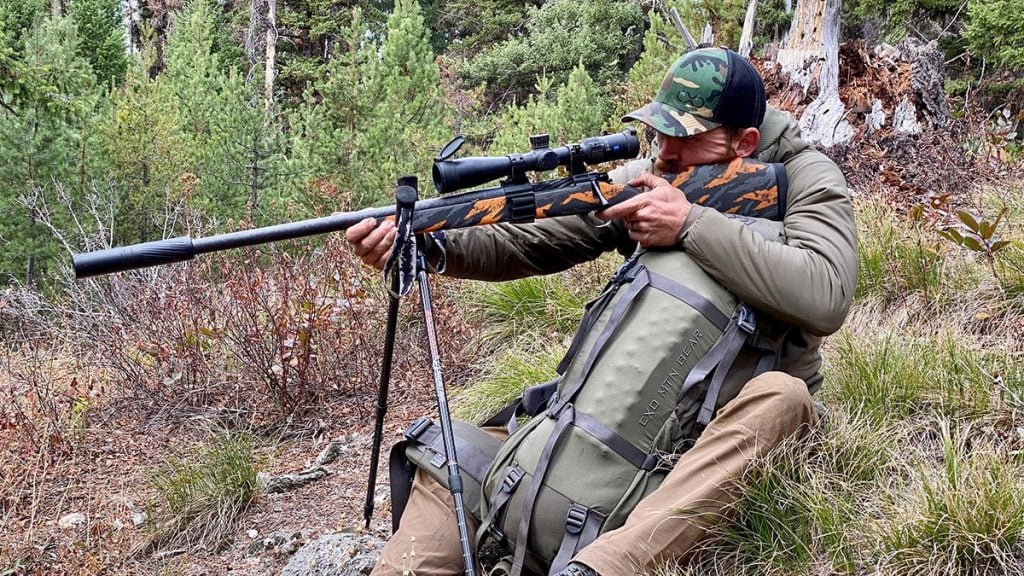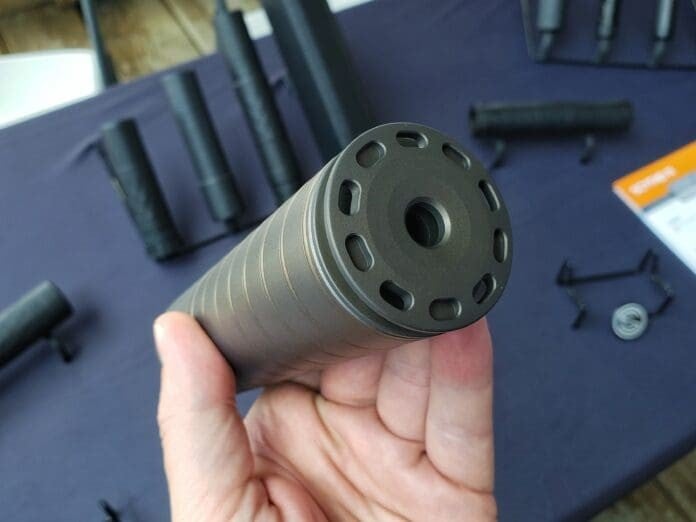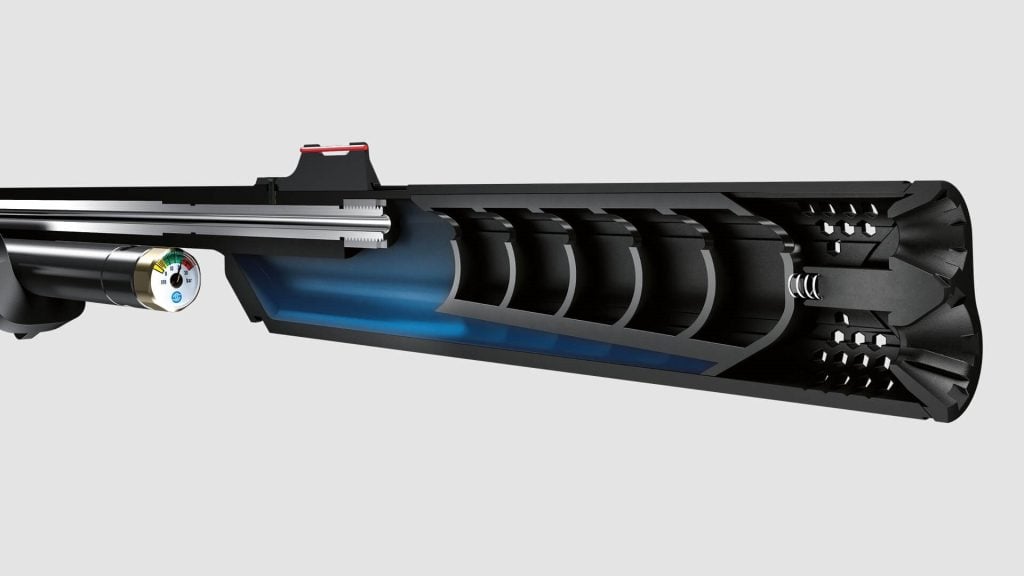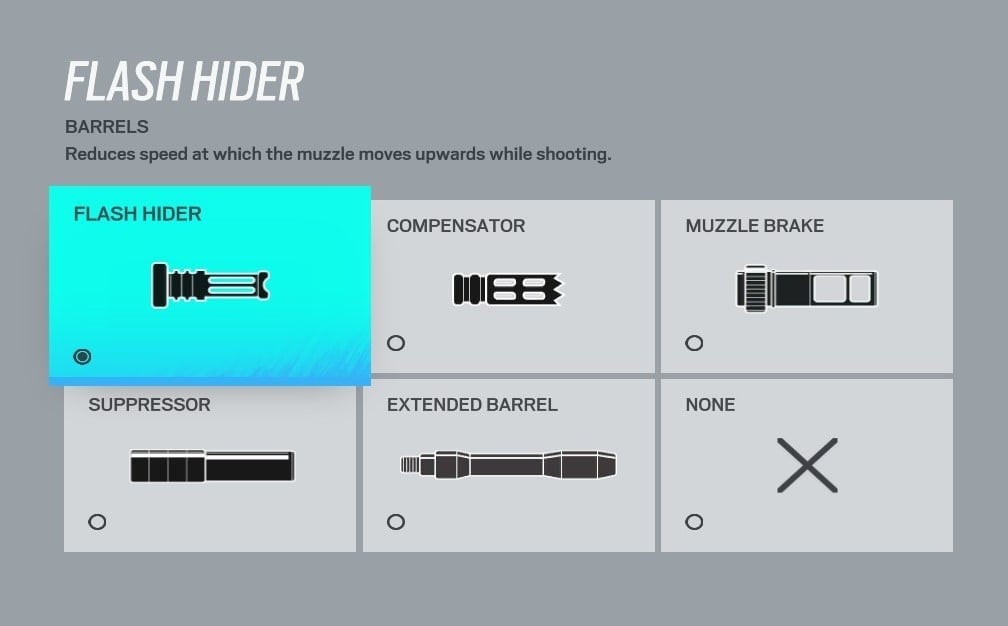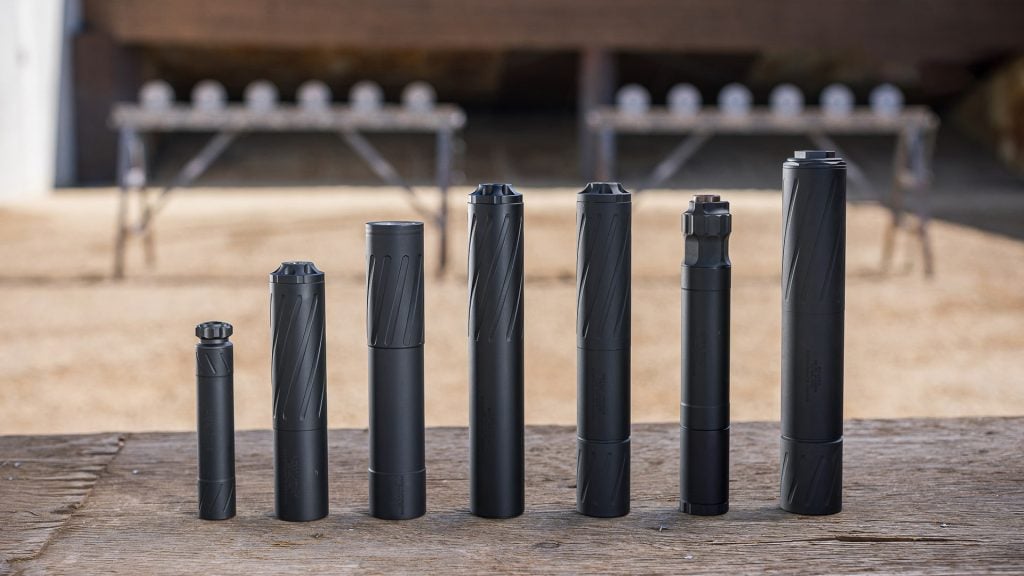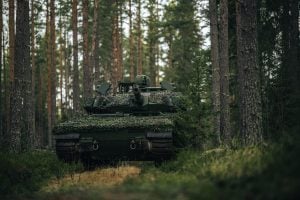Understanding the distinctions between a silencer and a suppressor can be quite perplexing, especially with the varying terminology used in both popular culture and the firearms industry. While Hollywood often refers to these devices as “silencers,” those within the firearms community typically prefer the term “suppressors.”
This article delves into Difference Between a Silencer and a Suppressor, their historical context, and provide a comprehensive overview of their functionality, legality, and applications.
Also Read | 2 Top Helicopter Of US Coast Guard
The Invention of the Silencer
The concept of reducing noise from firearms dates back to the early 20th century. Hiram Maxim, an inventor and engineer, created the first silencer in 1902, officially patenting it in 1909. His design, known as the Maxim Gun Silencer, was revolutionary. It was a tubular device affixed to the barrel of a firearm, engineered to decrease the sound produced during firing. The marketing strategy at the time emphasized the term “silencer,” which suggested a more complete reduction of noise than what the device could actually achieve.
The Shift to Suppressor
As firearms technology evolved and the political landscape surrounding gun ownership began to change, the terminology also adapted. The term “suppressor” gained traction as it more accurately described the device’s function: to suppress or reduce the noise rather than eliminate it entirely. This shift was not just semantic; it reflected a growing awareness of the need for precise language in the firearms community.
Understanding the Terminology
Silencer vs. Suppressor: Are They the Same?
In essence, there is no functional difference between a silencer and a suppressor. Both terms refer to the same device that is designed to mitigate the sound of gunfire. However, the Bureau of Alcohol, Tobacco, Firearms and Explosives (ATF) officially classifies these devices as “silencers” on all regulatory forms. This designation can sometimes lead to confusion among firearm enthusiasts and newcomers alike.
The Importance of Accurate Language
Using the correct terminology is vital for clear communication within the firearms community. While both terms can be used interchangeably in casual conversation, it’s essential to recognize that “suppressor” is more descriptive of the device’s actual function. This understanding helps to avoid misconceptions perpetuated by media portrayals that often exaggerate the capabilities of these devices.
How Suppressors Work
The Mechanics Behind Suppressors
Suppressors operate by slowing down and cooling the gases that are expelled from the firearm when a shot is fired. The device typically contains a series of internal baffles that disrupt the flow of gases, reducing the speed at which they exit the barrel. This process lowers the sound level, making the gunfire less audible.
Factors Affecting Sound Reduction
The effectiveness of a suppressor can vary based on several factors, including:
- Type of Firearm: Different firearms produce varying sound levels, and some are more compatible with suppressors than others.
- Caliber of Ammunition: Subsonic ammunition, which travels slower than the speed of sound, can significantly enhance the effectiveness of a suppressor.
- Design of the Suppressor: The specific design and materials used in the suppressor can also impact its sound-dampening capabilities.
Also Read | Top 5 Legendary Helicopters of the US Navy
Types of Muzzle Devices
Understanding Muzzle Devices
The term “muzzle device” encompasses a wide range of attachments that can be fitted to the end of a firearm’s barrel. While suppressors are one type of muzzle device, not all muzzle devices serve the same purpose. Here are some common types:
| Muzzle Device | Function |
|---|---|
| Suppressor | Reduces the sound of gunfire. |
| Muzzle Brake | Redirects gases to reduce recoil, improving control during firing. |
| Flash Hider | Minimizes the visible flash produced when firing, aiding in stealth. |
| Compensator | Redirects gases to reduce muzzle rise, enhancing accuracy and follow-up shots. |
Distinguishing Between Muzzle Devices
It’s crucial to differentiate between these devices to understand their specific functions. While suppressors focus on sound reduction, other devices like muzzle brakes and flash hiders serve different purposes that can impact shooting performance.
Legal Considerations
Understanding the Legal Status of Suppressors
The legality of owning and using suppressors varies significantly across different jurisdictions. In some regions, they are heavily regulated or even prohibited, while in others, they are legal with the proper permits. Understanding the laws in your area is essential to ensure compliance and safety.
The Application Process
In the United States, acquiring a suppressor typically involves a lengthy application process, including:
- Filling Out ATF Form 4: This form is required to transfer ownership of a suppressor.
- Submitting Fingerprints: Applicants must provide fingerprints for a background check.
- Paying a Tax Stamp Fee: A one-time fee is required for the transfer, which can vary by state.
Misconceptions Surrounding Suppressors
Debunking Common Myths
There are several myths surrounding suppressors that can lead to misunderstandings. Some of the most prevalent include:
- Myth 1: Suppressors make guns silent.
- Reality: Suppressors significantly reduce sound but do not eliminate it entirely. The noise level is often reduced to a level comparable to a loud clap.
- Myth 2: Suppressors are illegal everywhere.
- Reality: While some regions have strict regulations, many places allow legal ownership with the appropriate permits.
The Impact of Media Representation
Media portrayals often exaggerate the capabilities of suppressors, leading to misconceptions. Understanding the real function of these devices can help dispel myths and promote responsible gun ownership.
The Benefits of Using Suppressors
Enhancing Shooting Experience
Using a suppressor can greatly enhance the shooting experience for various reasons:
- Hearing Protection: Suppressors help protect the shooter’s hearing by reducing the loudness of gunfire.
- Less Disturbance: Shooting with a suppressor produces less noise, which can be beneficial in residential areas or during hunting.
- Improved Focus: The reduced noise can help shooters maintain focus and concentration during practice or competition.
Applications in Different Scenarios
Suppressors can be advantageous in various scenarios, including:
- Hunting: Reducing noise can prevent spooking game animals, improving the chances of a successful hunt.
- Training: Suppressors can create a more pleasant training environment, especially for beginners who may be sensitive to loud noises.
- Home Defense: In a home defense situation, a suppressor can help reduce noise levels, allowing for better communication and awareness.
Choosing the Right Suppressor
Factors to Consider
When selecting a suppressor, several factors should be taken into account:
- Compatibility: Ensure the suppressor is compatible with your firearm’s caliber and threading.
- Material: Different materials can affect weight, durability, and heat resistance.
- Design: Some suppressors are modular, allowing users to adjust length and performance based on specific needs.
Popular Brands and Models
While specific brands are not mentioned here, it is advisable to research various models and read reviews to find a suppressor that meets your requirements. Consulting with knowledgeable professionals at firearm shops can also provide valuable insights.
Safety and Maintenance
Proper Handling of Suppressors
Like all firearm accessories, suppressors require responsible handling. Always follow standard safety protocols when using firearms equipped with suppressors. This includes:
- Regular Inspections: Check for any signs of damage or wear.
- Proper Storage: Store suppressors in a secure location to prevent unauthorized access.
Maintenance Tips
To ensure optimal performance, regular maintenance of your suppressor is essential:
- Cleaning: Depending on usage, clean the suppressor to remove carbon buildup and debris.
- Lubrication: Use appropriate lubricants to maintain moving parts, if applicable.
Also Read | 11 Key Advantages of Joining the Indian Army Agniveer Program
Conclusion
In summary, the distinction between a silencer and a suppressor is more about terminology than function. While both terms refer to devices designed to reduce the sound of gunfire, “suppressor” is the more accurate descriptor of their actual performance. Understanding the mechanics, legal considerations, and benefits of using suppressors can empower firearm enthusiasts to make informed decisions about their use.
FAQs
1. Can I use a suppressor on any firearm?
Not all firearms are compatible with suppressors. It’s essential to ensure that your firearm is designed to accommodate a suppressor.
2. Are suppressors illegal in the United States?
The legality of suppressors varies by state. Always check local laws and regulations before purchasing or using a suppressor.
3. Do suppressors require maintenance?
Yes, regular maintenance is necessary to ensure optimal performance and longevity of the suppressor.
4. Can I hunt with a suppressor?
In many regions, hunting with a suppressor is legal and can provide benefits such as reduced noise and less disturbance to wildlife.
5. How much noise does a suppressor actually reduce?
The amount of noise reduction varies based on several factors, including the type of firearm, ammunition, and suppressor design. Generally, it can lower the sound to a level comparable to a loud clap.

